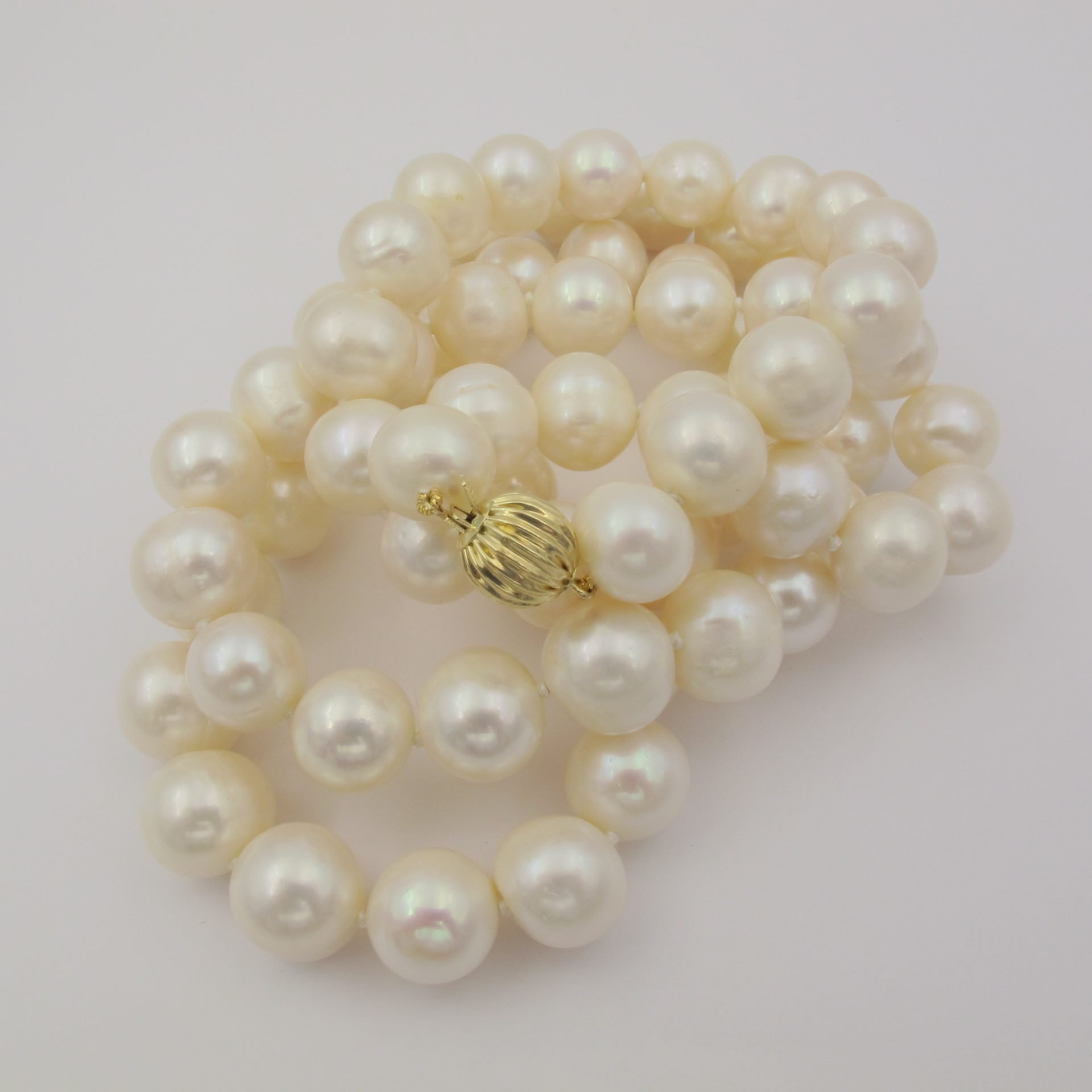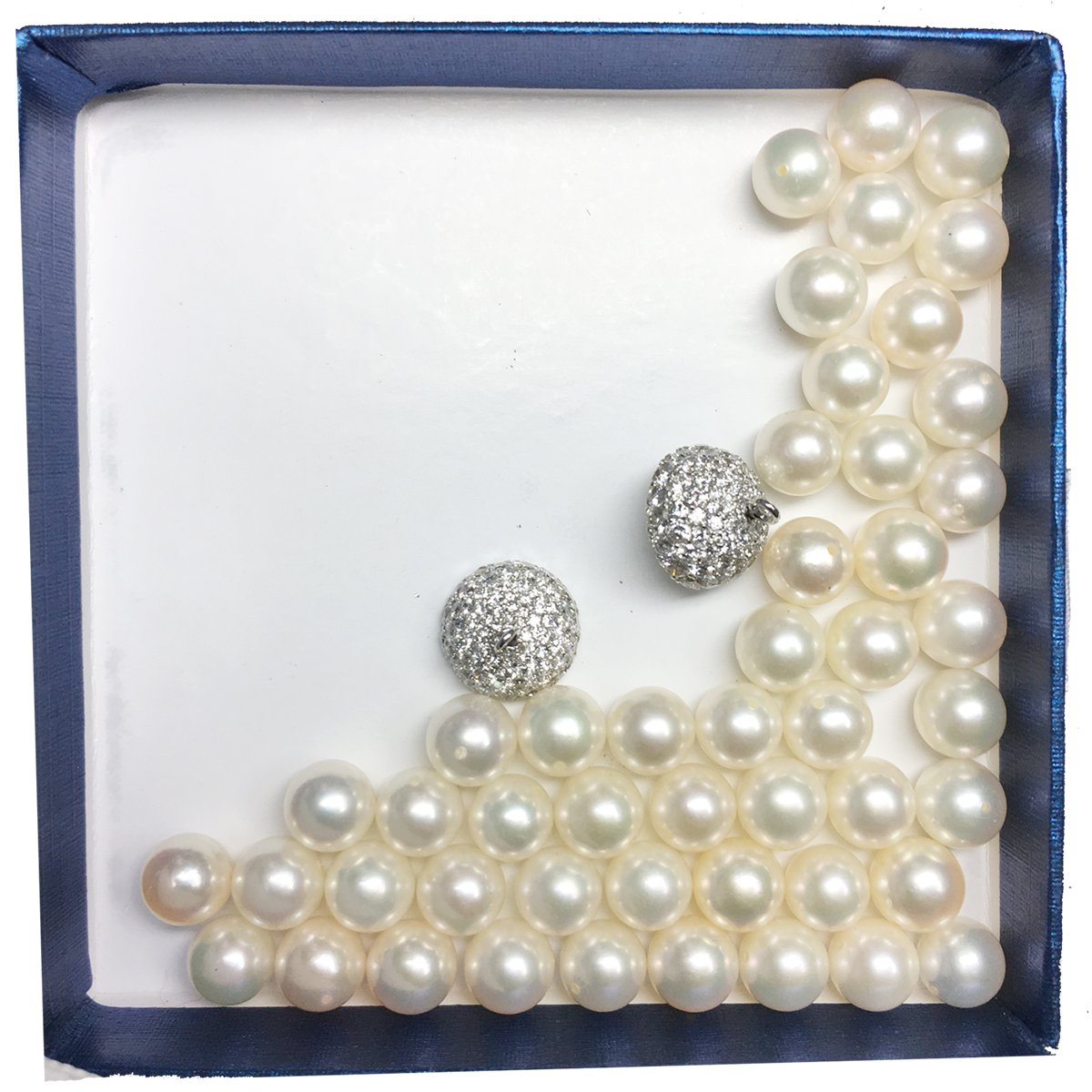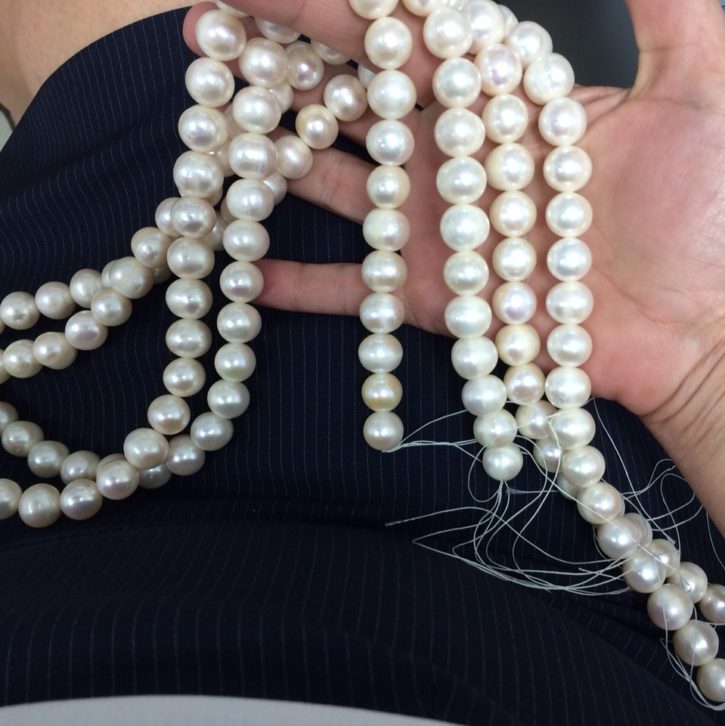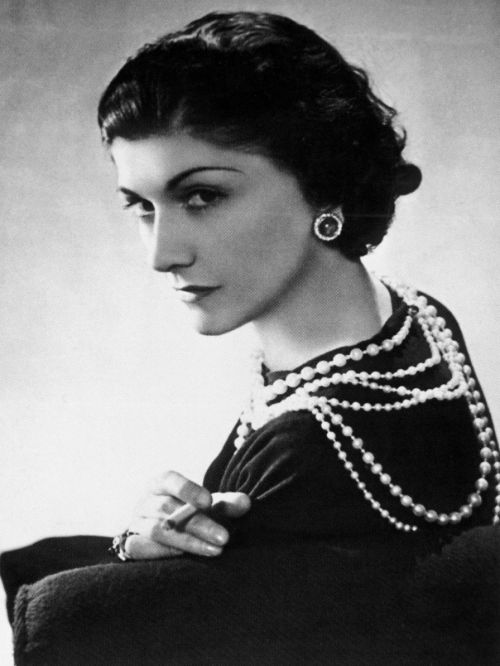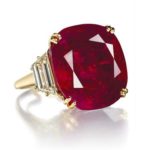Meet June’s Birthstone: The Majestic Pearl
“The rarest things in the world, next to a spirit of discernment, are diamonds and pearls.”
-Jean de la Bruyere
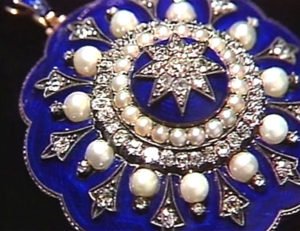
The Romans and Egyptians prized pearls above all other gems
The World’s Oldest Gem
The discovery of the pearl is not attributed to any one person in particular. It is believed that they were first discovered by people searching for food along the seashore. A fragment of pearl was found in the sarcophagus of a Persian princess that dates back to 420 BC. Pearls were presented as gifts to Chinese royalty as early as 2300 BC, and a Chinese historian wrote about pearls for the first time in 2206 BC. According to legend, Cleopatra crushed a pearl into a glass of wine to prove to Marc Antony that she could give the most expensive dinner in history.
Natural or Cultured?
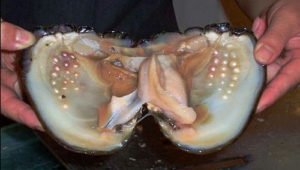
Natural Pearls Vs. Cultured Pearls, from V. Hemmadi, LinkedIn Pulse Article
Natural pearls are extremely rare. Many hundreds of pearl oysters or mussels must be gathered and opened to find even one wild pearl. Historically, many were found in the Persian Gulf; unfortunately, today, most have already been harvested. Natural pearls are usually the result of an accident, or an injury sustained by the mollusk. The reaction to the irritation is the secretion of a substance called nacre, which coats an irritant or foreign object. That reaction is repeated over and over, resulting in the formation of a pearl.
Cultured pearls are created when a mother-of-pearl bead or a piece of tissue is inserted into a mollusk to start the process of growing a pearl. The mollusks are raised until they are old enough to accept a mother-of-pearl bead implant; once implanted the mollusks are returned to the water and cared for in pearl farms. Pearls can be raised in either saltwater or freshwater. There are also different types of mollusks that produce pearls. The type of mollusk and the type of water will determine the look of the resulting pearl.
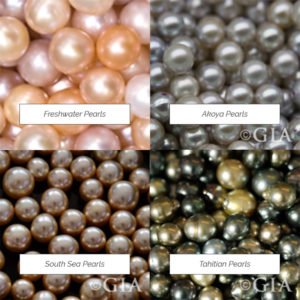
Cultured Pearl Types
Saltwater or Freshwater?
Cultured pearls are farmed in both saltwater and freshwater. The type of water will determine the look of the resulting pearl.
Saltwater pearls include Akoya Cultured Pearls, the South Sea Pearl and Tahitian Black Pearls.
- Akoya pearls are grown in Japanese and Chinese waters and range in size from 2mm (tiny) to 10mm (rare). They are usually white or cream in color and round in shape.
- South Sea Pearl is produced in Australia, Indonesia, and the Philippines, and it is the largest of all the pearls. They range in size from 9mm to 20mm and can be naturally white, cream, or golden in color.
- Tahitian pearls, interestingly enough, are not exclusively from Tahiti. They’re grown in several of the islands of French Polynesia, including Tahiti. Their typical sizes range from 8mm to 16mm. Collectively they are known as black pearls, but colors include gray, blue, green, and purple.
Freshwater Pearls are grown in freshwater lakes, rivers, and ponds, predominately in China. Most freshwater pearls are white and resemble the akoya cultured pearls in shape and size, but they can be produced in various shapes and array of pastel colors. Many freshwater pearls don’t have a mother of pearl bead implant. Instead a piece of tissue is used, resulting in a pearl with thicker nacre.
Content and Images Courtesy of GIA, The Jewellery Editor, Wikipedia & The American Gem Society
Click Here to Browse Pearl Jewelry
Interested in more stories like this? Join Us On Social Media. 
![]()

